When I got started a few years ago and began my vintage audio journey, I did a lot of reading and research about Marantz, Pioneer, Harmon Kardon, Sansui, Nakamichi, and high-end brands like McIntosh and Revox. One brand that never crossed my radar was Realistic. RadioShack’s infamous house brand that was sold next to the pulsating disco balls, wire strippers, and TV antenna.
RadioShack was started in Boston by two brothers in 1921 with the goal of supporting the growing number of people who were operating ham radios, and radio officers on ships. The “Radio Shack” was the official term for the room onboard ships where radio operators communicated with others ships and the various ports that they operated out of.
The company got into the catalog business in 1939 and entered the high-fidelity market in 1954. The initial plan was to sell their equipment under the “Realist” brand, but legal issues forced them to change it to “Realistic.”
Not very creative on their part but I suppose it was a way of describing the sound of their equipment if you listened hard enough.
Realistic had some very successful products in the CB category, along with a few 8-track tape recorders from their TR series that made money for RadioShack and Tandy.
The Tandy Corporation (which started as a leather goods manufacturer) acquired RadioShack and the rest is history. Tandy, along with Apple and Commodore revolutionized the personal home computer market which made their retail locations a major destination.
The Realistic brand benefitted from this level of exposure to hobbyists, computer nerds, and consumers who made RadioShack one of the leading retailers of consumer electronics. Tandy also consolidated the rather substantial catalog from 20,000 items to 2,500 items – focusing on the 20% that actually sold.
Around 500 RadioShack locations still exist (all independently owned) but the company that most of us grew up with is long gone (maybe…no, it’s gone). The Realistic brand was changed to Optimus, which is going to be the subject of a future article about budget vintage loudspeakers.
I’m sure many of you are wondering – “Is he really going to recommend Realistic as a vintage audio brand worth looking at?”
Indeed I am. But with some real caveats.
Realistic did not manufacture their own equipment. It was farmed out to OEM manufacturers in other countries, specifically Japan and Singapore. One of the manufacturers is a brand that will perk up the ears of a lot of audiophiles.
Especially those who purchased very expensive high-end CD players and transports when that market was quite big in the category.
We’re going to look at 4 specific components that were sold and marketed under the Realistic brand that offer decent build quality and surprisingly good sound quality. They’re not replacing my vintage tube Pilot or Fisher equipment, but I do own 2 of them and have access to the other two products I’m recommending.
The Realistic LAB-400 Turntable

I can hear the snickering from New Jersey all the way from here. Considering the time period when RadioShack sold a lot of audio equipment, it made sense for them to offer a lineup of turntables. Not all of them were very good, but the LAB-400 proved to be the exception to the rule. As I mentioned earlier, RadioShack had other OEMs manufacture their components. For this turntable, they selected C.E.C. — same company who made some of the most expensive audiophile CD players and transports. C.E.C. manufactured audio components for a significant number of audio companies including Marantz, Grundig, Sony, Sanyo, Toshiba, Alpine, Mitsubishi, Kenwood, and Teac.
Not a bad group of clients.
The Realistic LAB-400 is a direct drive fully automatic turntable and I’ll scare some of you by stating that it is almost as good as my Technics SL-1700. Turntable aficionados will stop reading, but I’m confident that they’ve never heard it. I’ve listened to it a lot. There are moments when I laugh because it’s hard to believe RadioShack offered such an affordable turntable like this that actually sounds good.

It features a simulated wood plinth, with dark grey metal accents, and an S-shaped tonearm with removable headshell. Audio-Technica cartridge users should delight in that knowledge.
The LAB-400 was sold with a factory-mounted Shure R-100E moving magnet cartridge; a really inexpensive cartridge that offers excellent depth, detail, and stereo separation. My neighbor, (@Hifi_neighbor on IG) uses the LAB-400 as his daily driver and having listened to it on a regular basis, I have to admit that I’m not sure he could replace it with something better at the same price that he paid. Very impressive vintage turntable for the money spent.
These turntables are highly regarded and the word is start to get out and build demand. A good example of the LAB-400 will run you around $150-250. It is a great starter turntable in the used vintage category.
Realistic STA-960 Receiver
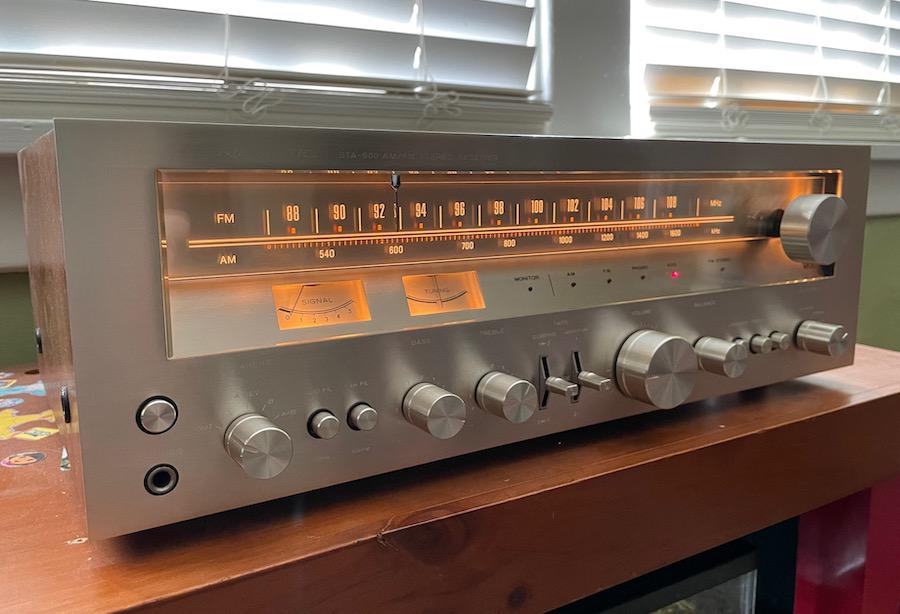
The STA-960 was a bit of an interesting find. The silver finish makes the unit look far more expensive than it really is, and the solid metal knobs feel like they were machined with precision. What makes it really work is the beveled glass front cover which allows the warm orange glow of the tuner dial and meters to really stand out. I turned the lights off multiple times just to enjoy the effect.
The receiver is actually reasonably powerful and can deliver 50 watts/channel (8 ohms) and drive a lot of affordable vintage loudspeakers quite well. I’ve compared the STA-960 receiver to comparable Pioneer units from the period and I preferred its tonal balance and sense of drive.
The Marantz 2245 is the logical competitor here – even though the Marantz has a cult following and has a genuine edge in the industrial design department.

Sonically – it’s pretty close but I can see a lot of people listening to both and picking the Realistic model. The differences are not huge, which amazed me and other listeners.
The downside is that these receivers are not very common and are quietly sought after by those who know the quality lurking behind the faceplate. A good working example will now run you in the range of $250-400, which is still a lot cheaper than a Marantz 2245.
Realistic APM-200

The APM-200 is a VU meter that connects via the speaker binding posts, rather than through one of the standard RCA output jacks. So if you have a receiver with an A/B speaker output and love the look of VU meters (and who doesn’t), then this is right up your alley. The display features both illuminated VU meters and LEDs which is very uncommon as it is usually one or the other with the exception of the Luxman M-4000 which is very rare.
The front has two switches; a power switch and the “2w/200w” switch which allows you to set the meter between the 2 – 200 watt range if you’re playing the beginning drum solo of Van Halen’s “Hot for Teacher.” For average listening levels, I leave it on 2 watts. There is a cheaper APM-100 model, but that model does not have the LEDs, wattage switch, or VU meter backlights.
VU meters have disappeared from most amplifiers; McIntosh, Yamaha, and Luxman still offer them on their products, and I know that most people who love vintage audio amplifiers almost demand this feature. The APM-200 has a serious following with people who collect these types of components and don’t be surprised to find one in the $150-250 range. They are rare and hard to find in pristine condition.
Realistic Minimus 7 Loudspeakers

I could spend an entire article just writing about these loudspeakers. The Minimus 7s are diminutive over-engineered 2-way speakers that have developed a cult following. It’s almost amusing how animated some people get on audio forums debating the merits/drawbacks of these very affordable loudspeakers. Ok – it’s somewhat pathetic how angry some audiophiles become fighting about this product. It’s a pair of loudspeakers. Made overseas.
Realistic offered several different models; the vast majority were made in black, white, or in this offbeat silver metal encased cabinet. A real walnut-veneered version; the Minimus 7W was rather popular.

Each model had two different versions; with the primary difference being the size of the capacitor used in the crossover. Regardless of which model you find, the crossover can be repaired or rebuilt rather easily with rudimentary soldering skills. Upgrading the capacitor can make a huge difference with this loudspeaker. The Minimus 7s actually require some power. I would recommend between 30-50 watts to really let them open up. The obvious downside with such a small woofer and cabinet is the absence of any real low end. This is not a bass monster for your parties. Realistic managed to get decent midrange and treble performance out of these loudspeakers. I have them set-up in my dining room connected to the Fisher 400 and I’m consistently amazed at how well they do with Radiohead, Jeff Buckley, the Avett Brothers, and other acoustic music.
You can find a pair of the Minimus 7s in decent condition below $50 which is actually a deal in this scenario.
RadioShack is back in business. For real. Their operations appear to be mostly online at this point but I’m hearing some online chatter about a return of Realistic or Optimus. I would stick with these rare components if you can find them.


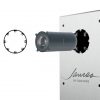



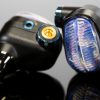
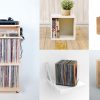



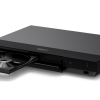



























Chris
March 10, 2021 at 4:48 pm
…Great piece, I’ve always looked at vintage gear from the eyes of a kid, I tend to seek out the things I saw at my relatives homes, reminds me of my youth. And boy, do I remember a lot of Realistic.
Jeremy Sikora
March 11, 2021 at 12:05 am
I vividly remember the Radio Shack ads. They were so awesome in the late 70’s and early 80’s.
Ian White
March 11, 2021 at 12:06 am
You do realise I have to find that turntable now. And stick some insane cart on it.
Ian
Chris Snyder
March 10, 2021 at 6:15 pm
I have a set of the Minimus 7 speakers in my garage. I’m getting ready to upgrade them to something more efficient but they have served their purpose and I paid $10.00 for them…
Chris Snyder
August 20, 2021 at 4:33 pm
I have a set in my garage as well! I just replaced them with some full range, folded horn units that I built but I’ll not sell off my Minimus 7s. They are going to my 13 year old for her first system.
Craig Stenstrom
March 11, 2021 at 2:05 am
Ecoustics is on a roll – another fun article. My only Radio Shack product is the LX4 speakers featuring the Linaeum Tweeters. For small cheap speakers they sound really good.
Ian White
March 11, 2021 at 2:30 am
Craig,
We so appreciate that you’re coming back and reading.
A lot of really fun and cool stuff coming. Including podcasts and videos on YT related to vintage and the rest of the audio/video world.
Best,
Ian
Ed Hanlon
March 15, 2021 at 6:21 pm
“Realistic did not manufacture their own equipment. It was farmed out to OEM manufacturers in other countries, specifically Japan and Singapore.”
Radio Shack manufactured much of what they sold in audio, including stereo receivers, equalizers, cassette decks and power meters like the APM-200 featured in this article. Tandy also OEM’d these products for other companies.
The STA-960 in this article is from 1981. In the 1981 Radio Shack catalog, there are 12 Realistic receivers, 9 of which were made by Tandy Electronics, three were made by Foster Electric, including the 960. Radio Shack manufactured most of their receivers from the mid 70s to late 80s. And most were made in Korea, not Japan and Singapore. Both TCE and Foster had manufacturing in Japan and Korea; only Foster produced receivers in Singapore. TCE manufactured what many will argue is the best stereo receiver ever made. If you doubt this then perhaps this interview will set you straight; https://docs.google.com/document/d/13qo4Lc3Wv0f3zv6_CAjGptbT9DY_mSyQpw5KBSEKK20/edit?usp=drivesdk
If you’re curious about who made what, I created a spreadsheet to set the internet genius’s straight; https://docs.google.com/spreadsheets/d/1laZVTI-3JgO9iTXwHc7I0mEpfSqb8O0bREcGWk10oiM/edit?usp=drivesdk
Ian White
March 15, 2021 at 10:31 pm
Ed,
Thank you for that rather interesting interview and spreadsheet. It does appear that 55 of the 110 components were made in Japan and Singapore.
The LAB 400 turntable was 100% made by CEC.
I plan on reading more about their receivers based on your list.
Thank you for commenting.
Best,
Ian
Ed Hanlon
October 24, 2021 at 3:55 am
Hi Ian –
The LAB-400 was manufactured by Toshiba. My source for this is Radio Shack’s buyer in Japan, Hiroshi Tom Tomininga. The superior LAB-300 was manufactured by CEC.
Ed
Ian White
October 24, 2021 at 6:31 pm
Ed,
That’s very interesting to hear because I’ve had other sources tell me that CEC made it. I know that the LAB-300 was made by CEC which makes it a sleeper table for price. It sold for under $200 when it was introduced.
What made the LAB-300 superior? Very curious to know more.
Ian White
Ed Hanlon
October 31, 2021 at 9:00 am
The belt driven LAB-300 has less rumble than the direct drive LAB-400, and a better tonearm. I have both tables and did a comparison using the same headshell and Grado Signature cartridge on both.
RJS
August 20, 2021 at 12:26 pm
I picked up a Realistic STA-78 earlier this year and I love it. It sounds great and looks better than most of the plastic slabs out today.
I remember in the early 90s that Radio Shack had released a portable CD player that was supposedly audiophile quality but super cheap. Audiophiles bought those things up with the quickness.
Ian White
August 20, 2021 at 4:04 pm
I do remember that. Sorta. Radio Shack wasn’t as big in Toronto when I became an audiophile and I’m pretty sure this slipped past a lot of us.
Some of them had Toslink optical outputs which made them a decent transport into a DAC back then.
Ian
RJ Sen
August 20, 2021 at 2:10 pm
I picked up a Realistic STA-78 earlier this year and this thing is a beast. It looks and sounds great.
Ian White
August 20, 2021 at 4:03 pm
We’ve noticed that the prices are going up as well. People have come to the realization that they made some really solid pieces and the hunt is on.
Thanks for reading.
Ian White
Warren R Keppler
August 20, 2021 at 6:01 pm
Love the vintage reviews. I have the Minumus 7s with upgraded crossovers in my desktop system, driven my a 6T9 compactron DIY tube amp, sounds great! Would enjoy hearing what you think of the Sherwood tube integrateds, especially the ones with tube rectification. I haven’t heard the Fishers et al, but I really like the Sherwoods with my Quad 57s.
Ian White
August 20, 2021 at 10:05 pm
Warren,
Any specific model numbers for the Sherwood? That might be something we can find.
Ian White
Warren R Keppler
August 21, 2021 at 4:50 pm
The Sherwood S 5000 would be a preference, but the any of them would be interesting. One interesting fact is you can get two and run them in mono (they have an inverting switch), which I am doing, sounds awesome. The S 5000 uses power tubes which are easy to find.
Warren R Keppler
August 20, 2021 at 6:07 pm
Just thought of some other vintage pieces which might be worth checking out, the Technics SL-23 belt drive turntable, or any of the 70s Onkyo mosfet powered receivers.
Ian White
August 20, 2021 at 10:04 pm
Onkyo definitely sounds like something that would be very interesting.
Ian White
DJ Jamison
November 30, 2021 at 2:53 am
It is awesome that you talked about Radio Shack. That brings back lots of memories. My audiophile “journey” started with Radio Shack while in middle school. I have 2 pairs of the Minimus 7 speakers (both pairs were yard sale items gotten at an attractive price). Did you notice that not one single speaker manufacturer picked up on these when Radio Shack went under? That’s too bad, because this was a very serious mini speaker which is not common today.
Ian White
November 30, 2021 at 11:38 am
DJ,
They were great little speakers. You’re right — not a lot of great mini speakers today.
The turntable is a real sleeper. It’s getting more expensive with each passing month on the used market.
Ian White
Don Anvil
January 20, 2022 at 9:31 am
Ha. I loved Radio Shack. I bought some very cool, unique stuff there over the decades. I had that audio meter and it was still working 27 years later, when I unloaded it with the rest of my gear. I had the smaller Minimus 5 speakers, which were in a silver metal cabinet. They were great for a small space. I remember that receiver and it was pretty good, but too expensive for a high school kid. The Realistic audio product I always desired were their Mach 1 speakers with the 15″ woofers – they were the bomb!
Steve Ramsey
October 13, 2022 at 1:07 pm
Many Thanks Ed Hanlon, your spreadsheet was a great find for me.
I have been using a 31-2010 12 Band Equaliser for many years, which was purchased to combat my industrial hearing damage. It’s been nothing short of a lifesaver for me.
Vernon Smith
March 11, 2025 at 3:29 pm
Great article, I love Realistic gear and have managed to pick up quite a few pieces for a lot less than the bigger name competitors. Just wanted to let you know, the Lab 400 was actually made by Toshiba, not CEC. CEC did make the Lab 300 though, which is also an amazing turntable (it’s belt drive though, not direct drive like the 400). I haven’t heard the STA-960 but I do have an STA-90 and STA-225 (45wpc and 50wpc respectively) and they both rock hard and sound great! Their lower powered units also sound really great, my daughter has an STA-84 (25wpc) and my wife has an STA-77 (16wpc I believe) and they definitely fill the room too!